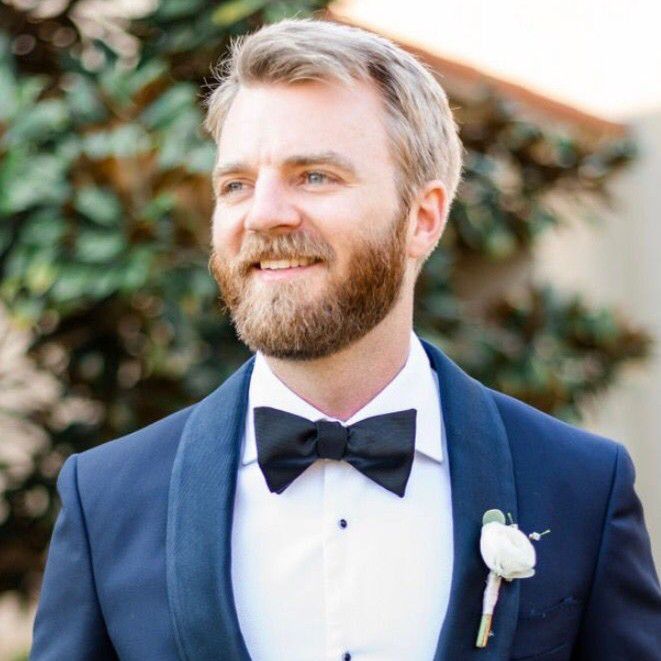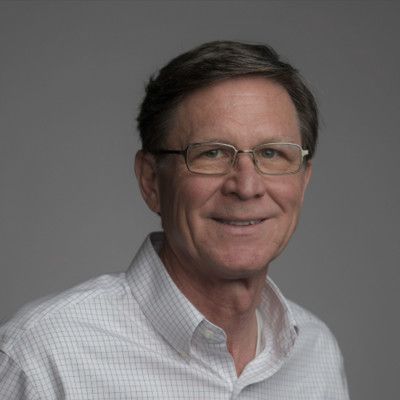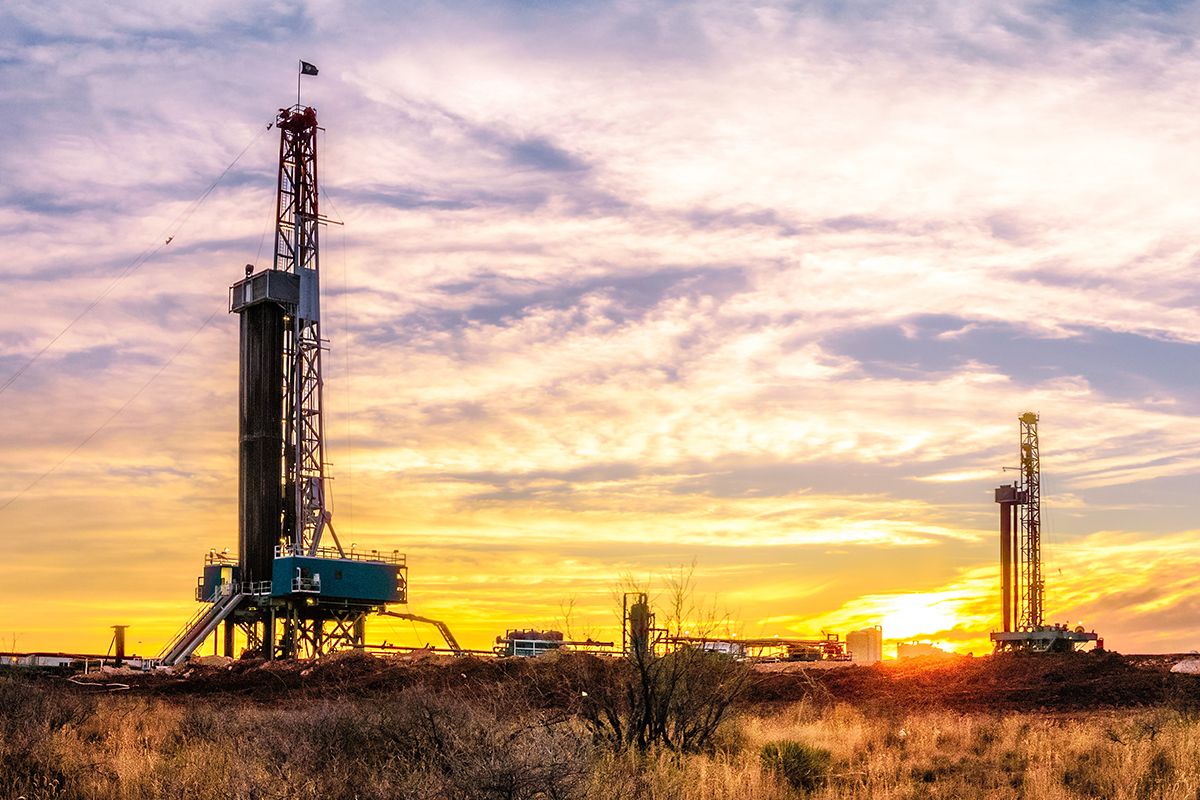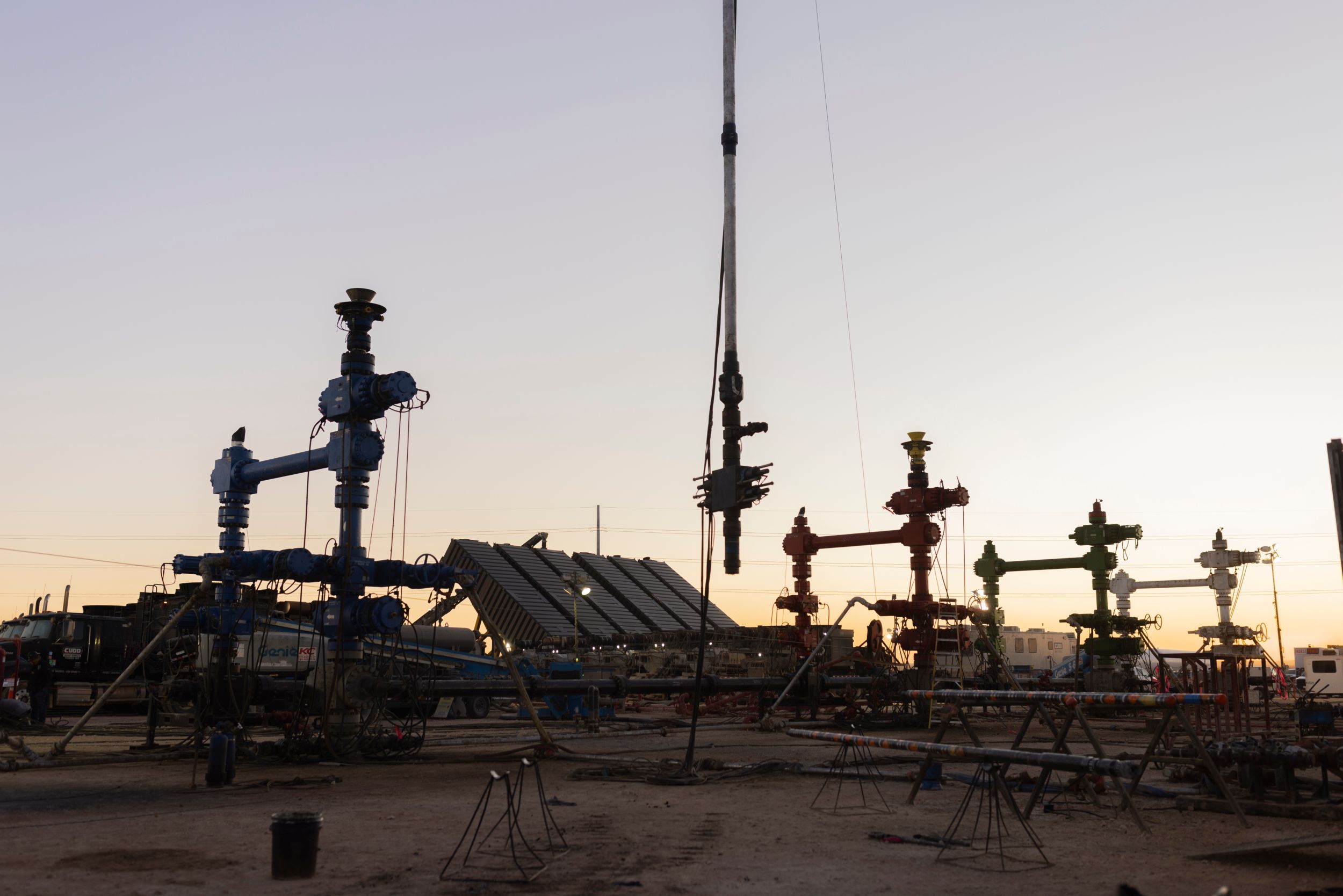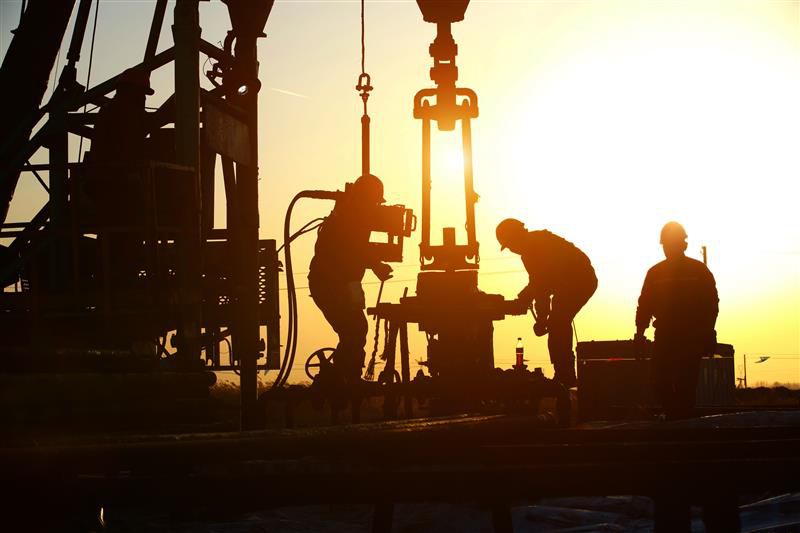00:00:02 Narrator
This episode of the Energy Pipeline is sponsored by Caterpillar Oil and gas. Since the 1930s, Caterpillar has manufactured engines for drilling, production, well service and gas compression. With more than 2100 dealer locations worldwide, Caterpillar offers customers a dedicated support team to assist with their premier power solutions.
00:00:28 Narrator
Welcome to the Energy Pipeline Podcast with.
00:00:31 Narrator
Your host, Russell Stewart.
00:00:33 Narrator
Tune in each week to learn more.
00:00:35 Narrator
About industry issues, tools and resources to.
00:00:38 Russell Stewart
Streamline and modernize the future of the industry. Whether you work in oil and gas or bring a unique perspective, this podcast is your knowledge transfer hub. Welcome to the Energy Pipeline. Hey everybody. As always, thanks for listening and I really believe you're going to be glad that you listened today. One of the neat things about being a podcast host in this industry and those who listen on a regular basis to this podcast or any of the OGGN podcast, which gives me an opportunity to do a little shameless advertising. Go to oggn.com and check out our entire lineup of close to about 20 different oil and gas podcasts. And we're big supporters of the industry. And my mantra is that the oil and gas industry is not the problem with the environment. The oil and gas industry is going to be the solution to the environment. And I have guests on my show all the time that prove that. And today is certainly no exception. In fact, today is exceptional. I have on the show today Kemp. Gregory Kemp is the co founder and CEO of renewell Energy. Kemp, thanks for coming on the show.
00:02:01 Gregory Kemp
Happy to be here, Russell. Thanks for having me.
00:02:03 Russell Stewart
Well, the pleasure is all mine because what you guys are doing, and I can't wait to get into it and talk about it, is just near and dear to my heart. You guys are finding a way to deal with some environmental issues in the oil and gas industry, and you're finding a way to do it that is helpful and also economically beneficial and helps take some of the bite out of the balance sheets of the maintenance costs that operators have to deal with. So let's just get right into it. Renew. Well, that kind of gives you a little bit of an insight into where we're going to be going here. But you guys are taking depleted wells, I guess, abandoned wells, we'll call them retired wells. Some of them are plugged and abandoned, some of them are not. And you guys are doing something really interesting and that's what I want to talk about. You guys are taking these wells and turning them into something that actually produces electricity. Is that right?
00:03:27 Gregory Kemp
Yeah, yeah. You could think of them as big batteries, but there's no electrochemistry so it's not like the lithium ion battery in your cell phone or laptop or maybe even car. This is a big mechanical system. So it's a, it's a big mechanical battery.
00:03:45 Russell Stewart
Okay. So I was so excited about this subject. I didn't do a very good job of introducing it here. So let's, let's talk about, or let's see if we can narrow it down to two. And I found out about you guys from a Heart Energy article that came out August 26th. But in the oil and gas industry, it's, as I said, we're big proponents of the oil and gas industry, but it's not without its problems. It's not without its environmental issues. And we have to address those environmental issues. So all across the United States we've got millions of oil and gas wells that are, as I said, retired or they're approaching the end of life. And it's a costly problem plugging and abandoning these wells. And a lot of them are uncapped and they're aging and they're leaking methane emissions and maybe causing groundwater contamination. And as I said, to deal with this problem is very expensive. Well, what you guys are doing is you're dealing with that problem economically, right?
00:05:02 Gregory Kemp
That's right. It is an appeal to the operator's pocketbook. No green premium. No, do it because somebody in Washington says so. Do it because it saves you money.
00:05:13 Russell Stewart
Okay, so we're going to get into the specifics of that here in just a second. But just to set the stage for the second thing, another problem that we're having is with all the digitalization and AI and Bitcoin and yada yada yada, we're having to add more data centers and those things, they have to be powered and it creates a strain on the electrical grid. So this, by taking these plugged in abandoned wells and converting them into what you call, you called batteries, you're actually being able to help out the electric grid to help electrify these data centers. Is that right?
00:06:05 Gregory Kemp
That's right. And I love that you went there. I'm going to tell you a bit of a story and then I'm going to weave it all together.
00:06:11 Russell Stewart
We like stories.
00:06:13 Gregory Kemp
Yeah, people love stories. So give them what they want. All right, so on my 27th birthday, I was sitting in IAH at the International terminal and I had a one way ticket to Buenos Aires in my hand.
00:06:27 Russell Stewart
Okay. Iah, that's Houston Intercontinental Airport.
00:06:30 Gregory Kemp
Yep.
00:06:31 Russell Stewart
Okay. Yeah. And where are you by the way? Camp. I forgot to ask.
00:06:35 Gregory Kemp
Yeah, yeah. Right now I'm based in Bakersfield, California, which we'll, we'll explain in time. Okay. But, yeah, my background is born and raised in Houston. Whole family's from Houston. Went to ut Austin, and then I went to go work for Shell.
00:06:49 Russell Stewart
Sorry. No, I'm kidding. Hook them horns.
00:06:54 Gregory Kemp
There you go. No, I, I, yeah, I miss Texas and everything that comes with it, including the fun rivalries. So, yeah, I'm sitting there in, in Bush, ready to fly to Argentina. And what I've been asked to do was basically help stand up the completions department in the vaca muerta in Neo Kin. So I was moving to essentially the Midland of Argentina indefinitely to try to help Shell do this. And when I got there, I spent the next 14 months trying as hard as I could to make it happen. And I heard the phrase no exist day, which is Spanish for it doesn't exist, more times than I can count. And what finally dawned on me was when I needed a specific tool, and the Halliburton guy told me, we're gonna have to fly it in from Iraq, which has had 35 years of the last 45 years in war. And it just blew my mind right then and there that that's what was required. I had to fly something in from Iraq to get the job done. And what I realized at that moment was it was the infrastructure in the United States that makes the oil and gas industry so powerful, so able to achieve what no other place can achieve at the speed and scale that we can do it here. It's because you need a, you need a part. It's on a hot shot 20 hours, and it's in your hand, and there's just nowhere else on the planet that can do that kind of thing. The tool is just an example. I mean, I'm talking about the electrical infrastructure, the gas pipelines, the frac crews, the drilling rigs. It's just, it's incredible. I mean, Argentina had a good rock. They had decent understanding the oil and gas industry. They've had wells there for a long time. But the infrastructure of the United States is really what makes the difference. And what dawned on me right then and has come back full circle now is that in order to do this whole AI data center build out, it's not the problem itself. It's not like we can't build buildings and put, you know, computers in them. It's that it's all the other stuff that we got to figure out how to do to make sure that it actually goes smoothly and no place On Earth has the better infrastructure for AI data centers, which might be as surprising than West Texas. West Texas has the solar power to do it, it's got the land to do it, it's got the gas pipelines to do it. And oh, by the way, there's something like 200,000 idle oil and gas wells sitting in that same area that could be an incredibly flexible energy storage backbone to this future massive demand. Not to mention all the electric submersible pumps that are going to go into the Permian and just the mega appetite it has for energy just to get the oil out of the ground. Not to mention all this other stuff we want to put out there. So as my thesis here that the infrastructure is what you need in order to accomplish whatever you want, and in this case, the AI data center build out is going to be an enormous ask. So we need an enormous amount of infrastructure. And repurposing what we already have is really the only option. Everything else is not fast enough or not cheap enough.
00:10:08 Russell Stewart
Okay, so how did you make the jump of repurposing plugged in abandoned wells?
00:10:18 Gregory Kemp
Yeah, so I'm sitting in Argentina. This is another. I had a lot of epiphanies that year and I'm realizing, you know, this isn't working as fast as we were hoping it would. This whole drill horizontally hydraulically fracture wells, just like we do in Texas and North Dakota and everywhere else in the states. In Argentina, it's just not going fast. And I kind of came to the conclusion that it wasn't going to get the shale gale, wasn't going to get exported around the world like a lot of people thought it was, you know, circa 2015. And so I came to the conclusion, okay, I want to be in a different slice of the energy industry. I want to be in the energy industry, no doubt. I just want to go to a different side. And that caught me, that drew me to the electricity side. That's where I thought that was. You know, I started learning about all the challenges that were going to have to take place to keep reliability extraordinarily high.
00:11:10 Russell Stewart
Well, you're absolutely right about that. That's. I mean, yeah, that's the challenge. That's the challenge.
00:11:15 Gregory Kemp
We could go out and switch all of our energy sources and it. We could do it, but lights would be shutting off. It'd be chaos. So we got to keep the reliability high. It's a must. Way too much money gets lost when blackouts happen. Imagine doing that any more frequently than it already does. It's just not an option, so the reliability has to stay high. So to me that was like, we're going to change this airplane while we're flying it. And that sounded like an exciting opportunity. But I knew I couldn't just stop being a petroleum engineer and start being some other thing, this new energy engineer, whatever you want to call it. So I actually left Argentina, went to California to get a master's in renewable energy engineering from Stanford, and that's where this idea was born that hate the either side of the energy industry. They have two, they have each have a unique problem. Oil and gas industry is sitting on millions of idle oil and gas wells which if the boot came down to plug and abandon them all tomorrow, what you would get is mass layoffs and bankruptcies and not a lot of wells plugged. So you can't just drop the hammer on P and A today. Then the renewables world and just the grid at large desperately needs energy storage. Basically the grid will either get more flexible or it will fail what's coming. So I kind of put those two together. We need energy storage. We need to do something with these wells. What if we could have a win win situation where we turn those wells into energy storage?
00:12:36 Russell Stewart
Well now that's a great question, but how in the world did you have an epiphany to come up with the answer?
00:12:43 Gregory Kemp
Yeah, this is the fun part of the story where I actually cannot take credit for the basic idea, the central idea. I got a good friend named Walker Colt, who, uh, we grew up together since the fifth grade. We kept touch all the years after high school. Um, and he calls me one day while I'm at Stanford and says, hey, I got this idea. We should move weights up and down inside of wells to turn them into big mechanical batteries. And I remember thinking, no way man, that's not going to work. Um, but we started batting around a spreadsheet back and forth, talking about it on the weekends and eventually it got to the point where, hey, I think this could work. So I had a completions engineering background. I did five years with Shell as a completions engineer. I was in arguably the hub of hardware startup space at Stanford and it was just the right place at the right time. And found a co founder who's Stefan Strekfus. He was another graduate student with me. We became fast friends and then co founders and pieces just kind of came together.
00:13:42 Russell Stewart
Wow, that's, that's fascinating. Okay, so take me to the, the process.
00:13:47 Gregory Kemp
Yeah, so we'll go through some semantics really quick. There are about 900,000 active wells in the United States. About 700,000 of those are classified as stripper wells, which mean they make less than 15 barrels a day. So that's sort of your top of the funnel. Then your middle of the funnel is about 2 million idle oil and gas wells in the United States. Now, idle means three things. Very specifically, it is still owned by someone. So I'm not talking about orphan wells, okay? It is not producing oil and gas and it is not plugged and abandoned, so it doesn't have all the cement in it and its head cut off and buried and all that stuff. It's just sitting there doing nothing with and it still has an odor. And that's actually the majority of wells. Then there's the orphan well population. I was just looking at some numbers today that said 177,000 documented orphan wells with somewhere between 50,000 and 800,000 undocumented orphan wells. So we don't really know how many orphan well wells are out there. So. But it's not more than the idle well population. And we want to deal with wells that have owners. So at renewal, we target the idle well population. And what we do to an idle well. Let's say it's got a pump jack, rods and tubing on it. We go in and we tell the operator, look, you're gonna have to plug and abandon that well. Next year. You were gonna have to take the pump jack out, take the rods out, take the tubing out and seal off the reservoir in some way. Do all of that, do those first few steps and then, and then stop, Stop. Because this well could have a whole new life in front of it. So what we do is that same work of a rig that pulls the tubing. Oh, pulls the rods, then pulls the tubing, runs our weight inside the well. Our weight is just oil filled tubing. The one we've got in the field operating today is 3 1/2 inch, 9.3 pound per foot, steel tubing, OCTG, regular stuff run by an old workout rig. And then we put heavyweight drilling mud in the inside of it. And it's 2,000ft long and it weighs 30,000 pounds. So we hang this long weight off at the wellhead and then we screw on essentially a very large rope socket. And then we attach 1 inch wire rope to the weight and we feed that 1 inch wire rope back onto a really big winch. It kind of looks like the sandline winch on a workover rig, but bigger. And so now what you've got is you've got a, a Shiv over the wellhead, kind of like a wireline shift. You got to wait in the well, and you got a winch on surface. As soon as that weight starts descending down the well because we've opened up, the brake starts pulling that wire rope off the winch, and that spins the winch in reverse, if you want to think about it that way. Now, it's kind of like the alternator in your car. It's spinning, creating current, which is pushing power back to the grid. Then when the weight gets to the bottom of the well, and electricity prices are cheap, we pull power from the grid, and we reel the weight up towards the surface. So you can think of weight moving down as discharging, to use regular battery language. And then weight moving up is us charging.
00:16:44 Russell Stewart
Okay. And so you're. You're hooking up directly to the utility grid.
00:16:50 Gregory Kemp
That's right.
00:16:52 Russell Stewart
And you're supplying. You're supplying electricity to the grid, and then you're also using the electricity to charge so that you can create the electricity to go back up to the grid.
00:17:09 Gregory Kemp
Yeah, more like a warehouse. We take the electricity when it's cheap, we give it back when it's expensive, and that's how we make money. From the energy storage side of things, we could be powering the pump jack right next to us, the active well right next to us, or we could be sending those electrons back off into the big grid to go do whatever else they need to do. So the first one is called behind the meter. Second one's called front of the meter. We can. We can do both.
00:17:33 Russell Stewart
And. And you can attach to a data center.
00:17:39 Gregory Kemp
Yeah. Yeah. I mean, yes. Short answer is yes.
00:17:44 Russell Stewart
Okay. All right. So. So, okay, now I see why you. Why you call it a. A battery. So the economics on this thing, your other options. And you mentioned West Texas, and. And what a prime candidate it was, you know, because it. Because of the sun. So solar's a big. A big deal out there in West Texas. And then you got, what, lithium batteries. Is that the other. Is that your other power source?
00:18:19 Gregory Kemp
Yeah. The main other form of energy storage that's growing today is lithium ion batteries. Actually, the way the United states stores, like, 90% of its energy storage is through pumped hydro. So we push water up a hill into a big reservoir, and then we flow it back. But there are simply too few suitable sites to meet the growing demand. And if anything, people are tearing pumped hydro stations down like we're tearing dams down and we're not building new ones. So the Go to alternative has Been lithium ion batteries. This is a fun little fact. The two most dense concentrations of lithium ion batteries in the United States are downtown Los Angeles and Monahan's Texas. Middle of nowhere, West Texas and downtown la.
00:19:09 Russell Stewart
That's interesting. That's incredible. Okay. All right. And of course, there's. There's environmental issues with batteries, too, that a lot of times, no doubt gets overlooked. And so you're taking this, repurposing it. We could almost call it recycling to some extent. You're recycling the well, and it's actually, in some ways, it's better than lithium. What about the economics? Lithium compared to this?
00:19:47 Gregory Kemp
Yeah. So the latest report from the National Renewable Energy Laboratory says that by 20th. This came out like two days ago. The says that the expected dollars per kilowatt hour, so it's capital cost. So all the dollars you got to spend to create all the energy storage you can hold for lithium ion batteries is $200 per kilowatt hour in 2030. So that's not today's price. That's the lowest estimate of what it could be in 2030. That number has been bouncing around. In 2023, that number was 250.
00:20:17 Russell Stewart
What is it now?
00:20:19 Gregory Kemp
Right now? Oh, you mean like, right, like today. Today, yeah, yeah. It's more like 300 to $400 per kilowatt hour.
00:20:26 Russell Stewart
It's already that expensive, so. So they're saying it's going to reduce by 2030, but not by that much.
00:20:33 Gregory Kemp
Right. So when I was in grad school, everybody was like, oh, lithium ion is going to hit $100 per kilowatt hour easy. Not the case. Not the case. It's actually, it's on a roller coaster ride of if you peg the projection of what is it going to be in 2030, that number has gone up and down. And that's mostly because it's such a international process to make a lithium ion battery, including a lot of reliance on foreign powers that aren't necessarily right.
00:21:01 Russell Stewart
Exactly. Yeah. Now, and so your process, and I think I read in the Hard energy article, you're calling these things gravity wells. Is that right?
00:21:11 Gregory Kemp
Yeah, yeah. Every well that's got a weight winch and wire in it, we call it gravity well.
00:21:15 Russell Stewart
Okay. And so the gravity well cost per kilowatt hour.
00:21:20 Gregory Kemp
Yeah, $5 per kilowatt hour.
00:21:23 Russell Stewart
$5. As opposed to currently over 300. Yeah.
00:21:29 Gregory Kemp
Here's how we do that, because what we build is a lot of hardware. So on its face, that might sound crazy. And we didn't figure out a way to pay for Pennies on the dollar for steel. What we do, renewal is a sort of a two trick animal. We turn wells into energy storage and we sell energy storage services. That's revenue number one. There's actually a second form of revenue because we provide a second service. We go in and we do the hard work of changing regulations and policy. Sometimes that means running a bill, sometimes that means working with regulators to use existing regulation that's never been used before. But essentially we get conversion to a gravity well put on the menu as an alternate way to satisfy plug and abandonment obligation. So Russell, if you've got a bunch of wells in, let's say Colorado and the ecmc, that's the local regulator telling you you got to plug 10 wells next year. Well, as of 2025, you now have another option. You, you could go plug them or you could convert them into gravity based energy storage and then you get to defer the rest of the plug and abandonment until the well is no longer a suitable candidate to serve as energy storage. Which in our estimates is a long time, at least 30 years.
00:22:52 Russell Stewart
But you've made money during this 30 years?
00:22:54 Gregory Kemp
That's right. You, Russell, you get to spend less money up front. You get to.
00:22:59 Russell Stewart
Russell, the operator.
00:23:01 Gregory Kemp
That's right, Russell, the operator gets to spend less money up front. Then you go put that money that would have been spent On P&A, a portion of it, you put it back into your working capital and you grow it at whatever you can get. 10, 12, 15, 20% doing workovers or drilling new wells or whatever it is that you're good at. And in that time, you will grow that money far beyond whatever your future P and A costs are. So everybody wins, right? The well gets plugged. It's not leaking. It's not sitting there unattended.
00:23:31 Russell Stewart
Okay, I want to stop right there. I want to stop right there. That because I wanted to go there. Okay, so, so you are, you are plugging the well. So we're taking care of, of groundwater contamination, we're taking care of methane emissions. So you're, you're actually solving an environmental issue right there.
00:23:52 Gregory Kemp
Yeah, and that's not altruism either. We can't have pressure in the well when we're moving this big weight up and down. So we have to seal the well off. It's a we must. So what we do is after the rods and the tubing are pulled, we have either a bridge plug or cement or both put down there above the shallowest perforation, and then we swap the well over to just Clean water, really packer fluid. And then we move the weight up and down inside of it. And we have pressure monitoring, we have methane monitoring, we can do pressure testing. We make sure that well is safe to be an energy storage device. By myself.
00:24:31 Russell Stewart
I'd love to hear that every day. This is. Okay, so you're the founder, your co. Founder and CEO. How long you guys been in business?
00:24:40 Gregory Kemp
We founded in May of 2020, so.
00:24:44 Russell Stewart
Five and a half years. Five and a half years. Okay, so this, this is, I mean this isn't theory. You're actually doing this?
00:24:57 Gregory Kemp
Yeah, yeah, we've got a, we've got a system that the, the stats I was describing earlier, 2,000ft long, £30,000, three and a half inch casing or tubing that's in a well in with an operator about 45 minutes from where I'm sitting.
00:25:12 Russell Stewart
Okay, that's in Bakersfield, which is, you know, the west Texas of California I guess you could say.
00:25:19 Gregory Kemp
There you go. So you mentioned we recently won a $5 million grant from the California Energy Commission to go build another five systems to convert five more wells.
00:25:29 Russell Stewart
Okay, so right now you just have them in California.
00:25:33 Gregory Kemp
That's right.
00:25:33 Russell Stewart
So you mentioned, you mentioned Colorado, which their regulatory is a lot tougher than it. Well, I guess it's comparable to, to California. Definitely a lot tougher than it is in Texas. So you've worked with the regulators in Colorado. This is a real deal you can do in Colorado.
00:25:56 Gregory Kemp
Yeah, yeah. So our three target markets are California, Colorado and New Mexico. In Colorado, existing language in the regulations said that if you take a well and you do something with it other than hydrocarbon extraction, it can be deemed a beneficial use. And when we read that, we said that is us. That is us. So we went to the regulator and we said please, please, please, please let us use this code you wrote. Fits us perfectly. And after a lot of back and forth they said yes you are. That you are beneficial use.
00:26:29 Russell Stewart
Now that's in Colorado.
00:26:31 Gregory Kemp
That's in Colorado. That's the reason I won't say the company name. We have one of the biggest operators on the five yard line to a six well deal. So really, really excited about what could happen in Colorado soon. So check mark on Colorado now.
00:26:48 Russell Stewart
New Mexico's tough too.
00:26:50 Gregory Kemp
Yeah, we, we ran a bill in New Mexico. I should, when I say we, we talked to an elected official and we said look, this is our idea. Would you be interested in authoring a bill that would support something like this? So I don't want to make it sound like Democracy wasn't at play. It totally was. So the. The elected representative went off and championed the bill, wrote it, authored it, we helped in every way we possibly could. I went to some Senate hearings in New Mexico, and then that bill passed in April. Governor Grisham signed it.
00:27:23 Russell Stewart
That's great. That's great.
00:27:24 Gregory Kemp
So that basically that's check mark for.
00:27:26 Russell Stewart
New Mexico that's opened up that market. Okay, so you mentioned those three markets. So what's the deal with West Texas? They got a tremendous problem with plugged in abandoned whales. Or our ones I claimed are plugged and aren't plugged anymore.
00:27:41 Gregory Kemp
Yeah, yeah, Some bad headlines recently in that one. So West Texas and Texas in general is just sort of this gleaming gem that we can't quite touch yet, but there are some really positive.
00:27:54 Russell Stewart
Is that because of solar?
00:27:57 Gregory Kemp
No, it's because the Railroad Commission's current regulation on plug and abandonment is very, very soft. Operators essentially do not have to plug and abandon wells in Texas if they don't really want to. The well needs to be a big nightmare in order for them to really be forced to plug and abandon it. And you can imagine in these bluer states like California, Colorado, New Mexico, they're a little tougher on the oil and gas industry to plug and abandon their wells. So Texas did pass a bill recently that said that the definition of an idle well is now 15 years or older, and those wells need to be plugged. So it's definitely trending in the right direction. We are eager to have Texas work. I'd love to get home, but for now, those three states that I mentioned are the target market.
00:28:50 Russell Stewart
Okay. All right. Well, I hope there's someone out there in the audience listening, because we brag about the fact that we're hurting over 134 different countries, which sounds really impressive, but that may mean one download in Kuwait or whatever. It counts as a country. No doubt about it. The majority of our audience is in North America, and the majority of that North American audience is Texas and Houston. And the Permian is where the majority of that comes from. I really hope there's somebody out there listening who sees how exciting this opportunity is and what a positive force it could be for dealing with the problem of these wells that are leaking methane and causing groundwater contamination. We really need to get a handle on that, on that problem, and we can. And your story here is just a perfect example of. Of that. And I'm really excited for you guys. Glad you could come on the podcast, tell your story. I hope people will reach out to you guys. We'll put your LinkedIn contact info in the show notes. We'll put the company website in the show notes. Folks, you need to reach out to campus. This, this is a tremendous and exciting opportunity and I'm just glad we were able to share it with our audience camp. Thanks for taking the time to do this. When you get back to Houston, look me up.
00:30:37 Gregory Kemp
Will do.
00:30:38 Russell Stewart
Okay, thank you, Russell.
00:30:39 Gregory Kemp
This has been a joy.
00:30:40 Russell Stewart
Yeah, it has been for me too. And as always to everybody out there, again, thanks for listening. Post us on LinkedIn. Tell your friends to listen, leave reviews please and we'll see you next time. Thanks for listening to oggn, the world's largest and most listened to podcast network for the oil and energy industry. If you like this show, leave us a review and then go to oggn.com to learn about all our other shows. Don't forget to sign up for our weekly newsletter. This show has been a production of the oil and gas.



